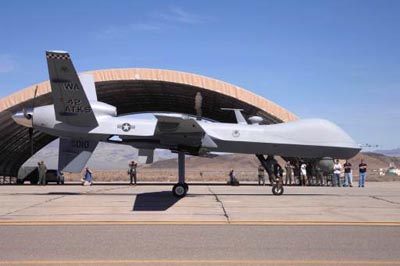Air Com bat Command chief Gen. Ronald Keys, plugging the Air Force’s push to be executive agent for all the Pentagon’s high-flying unmanned aerial vehicles, said there’s “no good reason” why the sensors on Army and Air Force UAVs should be different, since they feed a common network that mostly wants the same kind of information. Having different sensors is just one of the elements that USAF leaders believe add unnecessary development and support costs, he told reporters at a press conference at Bolling AFB, D.C., earlier this week. Keys also warned that unless one service—his—is in charge of orchestrating UAVs, midair collisions with manned aircraft and “frequency fratricide” of jamming each other’s communications is inevitable. The Army and friends, of course, take a different view.
bat Command chief Gen. Ronald Keys, plugging the Air Force’s push to be executive agent for all the Pentagon’s high-flying unmanned aerial vehicles, said there’s “no good reason” why the sensors on Army and Air Force UAVs should be different, since they feed a common network that mostly wants the same kind of information. Having different sensors is just one of the elements that USAF leaders believe add unnecessary development and support costs, he told reporters at a press conference at Bolling AFB, D.C., earlier this week. Keys also warned that unless one service—his—is in charge of orchestrating UAVs, midair collisions with manned aircraft and “frequency fratricide” of jamming each other’s communications is inevitable. The Army and friends, of course, take a different view.
The U.S. military is maintaining a beefed-up presence in the Middle East, including fighters and air defense assets, following the U.S. strikes on Iranian nuclear facilities June 22 and subsequent retaliation by the Iranians against Al Udeid Air Base in Qatar.
